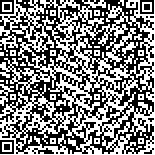李霞,马玲玲,徐守宇,向伟华,庞锦阔.基于交叉迁移理论的健侧肢体力量训练对偏瘫患者运动功能的影响[J].中华物理医学与康复杂志,2017,39(11):819-822
扫码阅读全文

|
| 基于交叉迁移理论的健侧肢体力量训练对偏瘫患者运动功能的影响 |
| Training the less-affected limb improves motor function in hemiplegic patients through cross transport |
| |
| DOI: |
| 中文关键词: 偏瘫 力量训练 下肢功能 |
| 英文关键词: Hemiplegia Strength training Lower limb function Cross transport |
| 基金项目:2015年浙江省医药卫生一般研究计划B类(2015KYB280);浙江省教育厅2015年度高校国内访问学者专业发展项目;浙江中医药大学2017年度校级科研基金项目(2017ZZ07);国家中医药管理局重点学科建设经费资助项目[国中医药人教发(2012)32号] |
|
| 摘要点击次数: 5613 |
| 全文下载次数: 8071 |
| 中文摘要: |
| 目的 观察健侧力量训练后脑卒中偏瘫患者是否能产生交叉迁移现象。 方法 选取脑卒中偏瘫患者30例,按随机数字表法分为实验组和对照组,每组患者15例。2组患者均接受常规康复治疗,实验组给予健侧肢体踝背屈等长抗阻训练。2组患者在训练前、训练6周后测定最大随意收缩力量(MVC)和表面肌电变化,采用简化Fugl-Meyer运动功能评定量表(FMA)下肢部分评定下肢运动功能。 结果 训练后,治疗组FMA评分为(26.53±2.64)分,与组内治疗前和对照组治疗后比较,差异均有统计学意义(P<0.05);训练后,治疗组胫骨前肌IEMG、腓肠肌IEMG与组内治疗前和对照组治疗后同侧比较,差异均有统计学意义(P<0.05)。治疗后,治疗组双侧胫骨前肌MVC和腓肠肌MVC与组内治疗前和对照组治疗后同侧比较,差异均有统计学意义(P<0.05)。 结论 健侧踝背屈等长抗阻力量训练可引起脑卒中偏瘫患者对侧胫骨前肌和拮抗肌的力量增长,存在力量训练的交叉迁移现象;健侧等长抗阻力量训练可改善下肢运动功能。 |
| 英文摘要: |
| Objective To observe whether strength training of a healthy limb can produce a cross transport effect on the affected side. Methods Thirty hemiplegic stroke survivors were randomly divided into an experimental group and a control group, each of 15, using a random number table. Both groups received conventional rehabilitation, while the experimental group was given training to strengthen dorsiflexion and the isometric resistance of their healthy ankles for 6 weeks. The maximum voluntary contraction (MVC) and surface electromyography were measured before and after the training. The lower-extremity section of the simplified Fugl-Meyer motor function rating scale (FMA) was used to assess the subjects′ motor function. Results After the training, the average FMA score of the experimental group was significantly better than before the treatment and also significantly better than that of the control group after the treatment. After the training, the average IEMGs of the tibialis anterior muscle and the gastrocnemius in the treatment group were significantly different from those of their ipsilateral side before the treatment and in the control group after treatment. Significant differences before and after the treatment were observed in the average MVC of both tibialis anterior and gastrocnemius muscles in the experimental group, and between the experimental group and control group averages. Conclusion Ankle strength training of hemiplegics′ healthy limbs can strengthen the contralateral and antagonistic muscles, which indicates the cross transport of strength training. Isometric resistance training of the less-affected limb can improve the motor function of hemiplegics′ lower extremities. |
|
查看全文
查看/发表评论 下载PDF阅读器 |
| 关闭 |